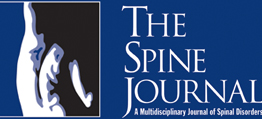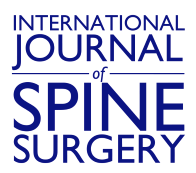
Abstract
BACKGROUND CONTEXT: Few studies have presented data on multi level TDR, especially in the long-term. In order to validate the use of TDR on multiple segments, further, longer-term investigation is needed. Here we present 5-year data for the FDA IDE clinical trial to support 2-level TDR as ab efficacious treatment option.
PURPOSE: To analyze the safety and effectiveness of 2-level TDR in comparison to an ACDF control group.
STUDY DESIGN/SETTING: A prospective, randomized, multicenter concurrently controlled clinical trial. The trial was conducted across 24 sites in the U.S.
PATIENT SAMPLE: The patient population consisted of 330 patients randomized in a 2:1 ratio. 225 patients were treated with TDR and 105 with ACDF. Inclusion criteria included a diagnosis of symptomatic cervical degenerative disc disease at two levels with no history of previous operations on the cervical spine.
OUTCOME MEASURES: Measure outcomes included Neck Disability Index (NDI), VAS neck and arm pain, segmental range of motion (ROM), patient satisfaction, SF-12 MCS and PCS, major complications, subsequent surgery rate, and overall success rate (composite primary endpoint).
METHODS: TDR patients were treated using a Mobi-C© artificial disc (LDR Medical, Troyes, France). ACDF with allograft and anterior plate was used as a control treatment. Outcome measures were collected preoperatively at 6 weeks, and 3, 6, 12, 18, 24, 36, 46, and 60 months.
RESULTS: At 5 years, data were available for 186 TDR patients and 72 ACDF patients. Both the TDR and ACDF group showed significant improvement from baseline NDI scores, VAS neck/arm pain score, and SF-12 MCS/PCS scores (p<0.0001). The mean improvement from baseline NDI scores was significantly greater in the TDR group compared to the ACDF group (TDR: 37.4±19.8 vs ACDF: 27.9±17.8, p=0.0003). The NDI success rate was also significantly greater in the TDR group (TDR: 82% vs ACDF 56.6%, p<0.0001). Mean improvement is the VAS neck pain scores was 52.16±29.93 for the TDR population and 44.81±30.79 for the ACDF population. Mean improvement in the VAS arm pain scores was 29.38±40.278 (right arm) and 37.76—36.51 (left arm) for the TDR group and 26.88±40.008 (right arm) and 32.59±37.825 (left arm) for the ACDF group. Mean segmental ROM was maintained in the TDR group. The TDR group had a significantly higher rate of patients who were “very satisfied” with their treatment compared to the ACDF group (TDR: 85.6% vs ACDF: 75.0%. p=0.04940z0. TDR patients had a mean improvement in SF-12 scores of 10.9±12.7 (MCS) and 13.3±11.6 (PCS) while the ACDF group had a mean improvement of 9.3±12.5 (MCS) and 8.8±11.6 (PCS). The 5-year rate of major complications was 4.4% for TDR patients and 8.6% for ACDF patients. The subsequent surgery rate leading to the study failure was significantly lower for the TDR group compared to the ACDF group (TDR: 4.27% vs ACDF: 16.9%, p=0.0004). The overall success analysis demonstrated the superiority of TDR over ACDF.
To Read The Full Article Click Here





